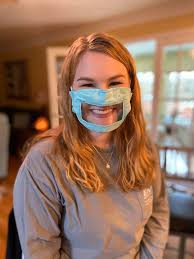Anxiety, Depression and Suicide Are at All-Time Highs. Masks a major factor.
Thu 9:53 am +01:00, 10 Sep 2020- 36% report having trouble sleeping, 32% have trouble eating, 12% report increased alcohol consumption and/or substance use and 12% report worsening of chronic health conditions due to worry and stress. Those faring the worst are people sheltering in place, 47% of whom report negative health effects, compared to 37% of those not sheltering in place
- A CDC study found 40.9% of respondents reported anxiety, depression or symptoms of trauma- and stressor-related disorder relating to the pandemic; 13.3% of American adults reported new or increased substance use as a way to manage stress, and 10.7% of adults said they’d seriously contemplated suicide in the past 30 days
- Unpaid caregivers for adults had the highest rate of suicidal ideation at 30.7%, followed by young adults, age 18 to 24 (25.5%) and essential workers (21.7%)
America has had an epidemic of poor health long before SARS-CoV-2 appeared earlier this year. This is largely a result of industry propaganda influencing their choices of large amounts of processed foods that are high in carbs and industrially processed vegetable oils.
However, over the past several months, several polls discovered more about the impact of the COVID-19 pandemic response on mental health, and it’s not good. In the featured video, Glenn Greenwald, host of System Update, discusses the “crumbling of the U.S. social fabric” and explores the rise in “deaths of despair” from drugs and suicide brought on by the pandemic.
Anxiety, Depression and Suicide Are at All-Time Highs
Indeed, statistics show rates of depression, anxiety and suicide are currently at an all-time high.1,2The Kaiser Family Foundation has conducted polls at regular intervals since the beginning of the pandemic. Here’s a quick summary of findings over time:
• In the early-April poll,3 45% of respondents said the pandemic had disrupted their lives “a lot,” with women (49%) being more disproportionally affected than men (40%). At the time, 52% worried they would lose their job, and 85% worried local businesses would have to permanently close due to loss of revenue.
• The late-July poll4 found that 60% of American adults still felt that the worst effects of the pandemic were still to come (down from 74% in early April5), and 53% now said that “worry and stress related to coronavirus has had a negative impact on their mental health.” Of respondents, 4 in 10 reported having trouble affording basic necessities or falling behind on bills.
• Poll results6 published in late August revealed economic hardships have negatively affected many people’s mental health “and created new barriers for people already suffering from mental illness and substance use disorders.”
As in the previous month, 53% of American adults said their mental health “has been negatively impacted due to worry and stress over the coronavirus;” 36% report having trouble sleeping, 32% have trouble eating, 12% report increased alcohol consumption and/or substance use and 12% report worsening of chronic health conditions due to worry and stress.
Those faring the worst are people sheltering in place, 47% of whom report negative health effects, compared to 37% of those not sheltering in place. Women with children under the age of 18 also report higher rates of mental health problems than male counterparts. Kaiser Family Foundation reports:
“More than 1 in 3 adults in the U.S. have reported symptoms of anxiety or depressive disorder during the pandemic (weekly average for May: 34.5%; weekly average for June: 36.5%; weekly average for July: 40.1%).” For comparison, from January to June 2019, the rate of anxiety or depressive disorder was 11%.
Stress Is Taking a Toll, CDC Finds
Similarly, a study7 by the U.S. Centers for Disease Control and Prevention published August 14, 2020, found 40.9% of the 5,412 respondents reported struggling with anxiety, depression or symptoms of trauma- and stressor-related disorder (TSRD) relating to the pandemic; 13.3% of American adults reported new or increased substance use as a way to manage stress, and 10.7% of adults said they’d seriously contemplated suicide in the past 30 days.
Unpaid caregivers for adults had the highest rate of suicidal ideation at 30.7%, followed by young adults, age 18 to 24 (25.5%) and essential workers (21.7%). Symptoms of trauma- and stressor-related disorder caused by the pandemic, increased substance use and suicidal ideation were all also more prevalent among employed than unemployed respondents.
Now, as noted by Greenwald in the video above, depression and suicide rates were seeing significant increases even before the pandemic, especially among younger people. This, despite the explosion of social media, where you can stay connected to people across vast distances 24/7.
This paradoxical result has been taken as evidence that social media simply cannot replace actual face-to-face interactions. We need physical contact. We need to be able to interact face-to-face.
Between lockdowns and mandatory mask orders, not only has physical contact been extinguished, but we also cannot see each other’s facial expressions when wearing masks. Both significantly contribute to the feeling of alienation and loneliness.



